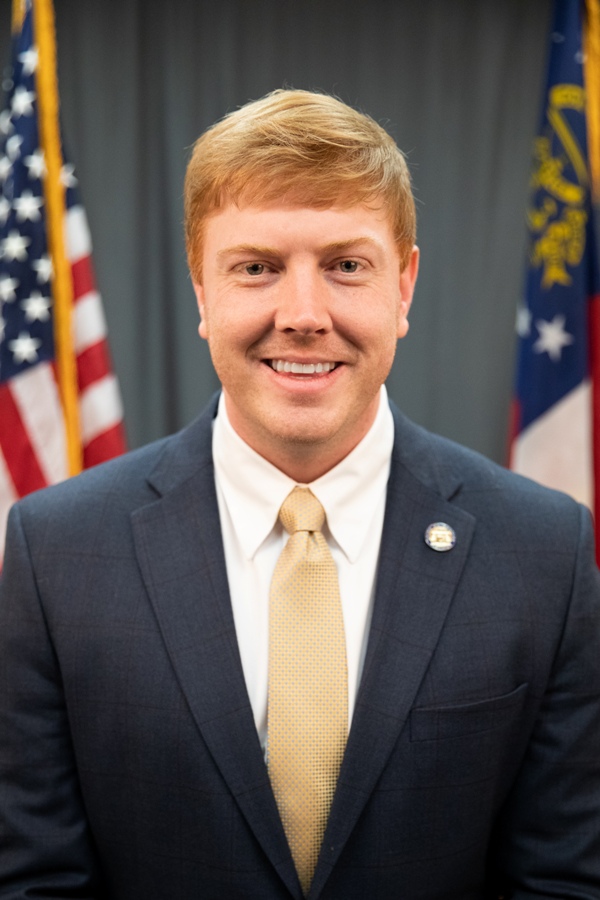
The third week in January is traditionally set aside to focus exclusively on evaluating the budget and diving into the Governor’s recommendations for the fiscal year. As you may know, the one and only constitutional obligation the Georgia General Assembly has each year is to pass a balanced budget. As Chairman of the Senate Appropriations Committee, I do not take these deliberations lightly as it is imperative we fulfill this obligation to the best serve the needs of all Georgians at the lowest possible cost to taxpayers. In any event, there is simply no way to sum up all the matters in the state budget so let me try to hit a few of the highlights from this week’s hearings:
Returning Money to Taxpayers: It’s no secret that Georgia’s economy has outperformed the nation since the pandemic. By staying open and protecting jobs and livelihoods, Governor Kemp put Georgia in a position to thrive- and we did. We’ve been able to send over $1 billion back to taxpayers and suspend the state’s motor fuel tax because of how strong Georgia’s economy has been. It’s not lost on me that Georgia’s economy has stayed strong because you’ve continued working, and for that I’m truly grateful.
Since state revenues continue to be strong, Governor Kemp is again proposing we return taxpayer money to the taxpayers it came from. He’s recommending another $1 billion returned to those who pay state income tax and another $1 billion to offset property taxes which have sharply risen due to home sale price inflation post-COVID. He’s also proposing approximately another $1 billion to cover the suspension of the state motor fuel tax we’ve enjoyed since last spring. I constantly remind my colleagues that the state doesn’t spend its money, we spend your money, so I support these opportunities to return funds to the taxpayers it came from.
State Liabilities: While we intend to continue running a tight ship from a fiscal perspective, we do have some state needs we must address to make sure our families stay safe and citizens have services government should provide. We’ve experienced challenges to this lately, particularly in maintaining our workforce. Turnover in state jobs is over 25%. It’s very hard to run a business when 25% of your workforce is new each year. In some agencies though, the turnover number exceeds 90%. Imagine being a foster child or parent and having 5 different case workers in 18 months. None of them can really get a true sense of your case to help you. In addition, imagine being a foster care caseworker who hasn’t left. Each time one of your colleagues leaves, your caseload grows. While your agency is trying to fill the position of your missing colleague, the employment market is so tight, quality candidates are being grabbed by other businesses first. We see this in Corrections, Dept. of Juvenile Justice, and every department that has nurses just to name a few. The Governor’s budget proposes a $2,000/yr increase to help stem turnover and reward employees who have stayed. We’re also working on creative measures including retirement, work/life balance, and shift schedules to address this topic.
In addition to work force liabilities, we face true fiscal liabilities this year too. For example, the State Health Benefit Plan provides benefits for over 650,000 state employees, teachers, and their dependents. This year, we need to put over $1 billion in the plan to protect its solvency. Our Teachers’ Retirement plan reported needing over $21 billion to be fully funded. Our Employees Retirement plan (which covers most non-teacher state employees) reported a deficit of over $5 billion to reach full funding. Outstanding tax credits accounted for another $4.6 billion in state liabilities and our department charged with managing the risks of state assets reported outstanding liabilities as well.
In the Post-COVID world, we’ve see so much extra spending I fear we’ve lost a sense of how large $1 billion actually is. I’ve found this comparison to help me keep perspective. There are one million seconds in 11 days. To reach one billion seconds, you’d need 32 years! For additional perspective, the cost of our entire technical school system is around $400 million.
While this is just a small fraction of some of the matters discussed this week, I look forward to diving in further on the budget and other matters in the weeks ahead. As always, I am here to serve you. Please do not hesitate to reach out or stop by if you find yourself near the Capitol in the coming months. It’s always great to see faces from home.









